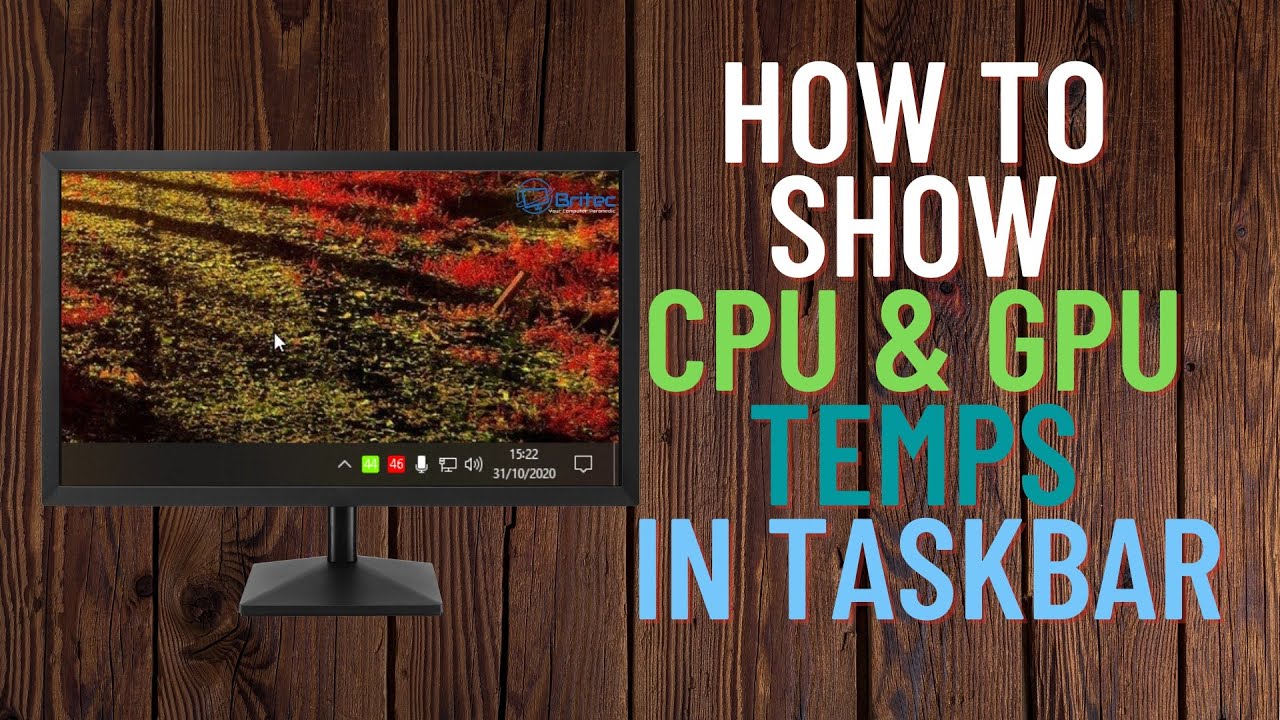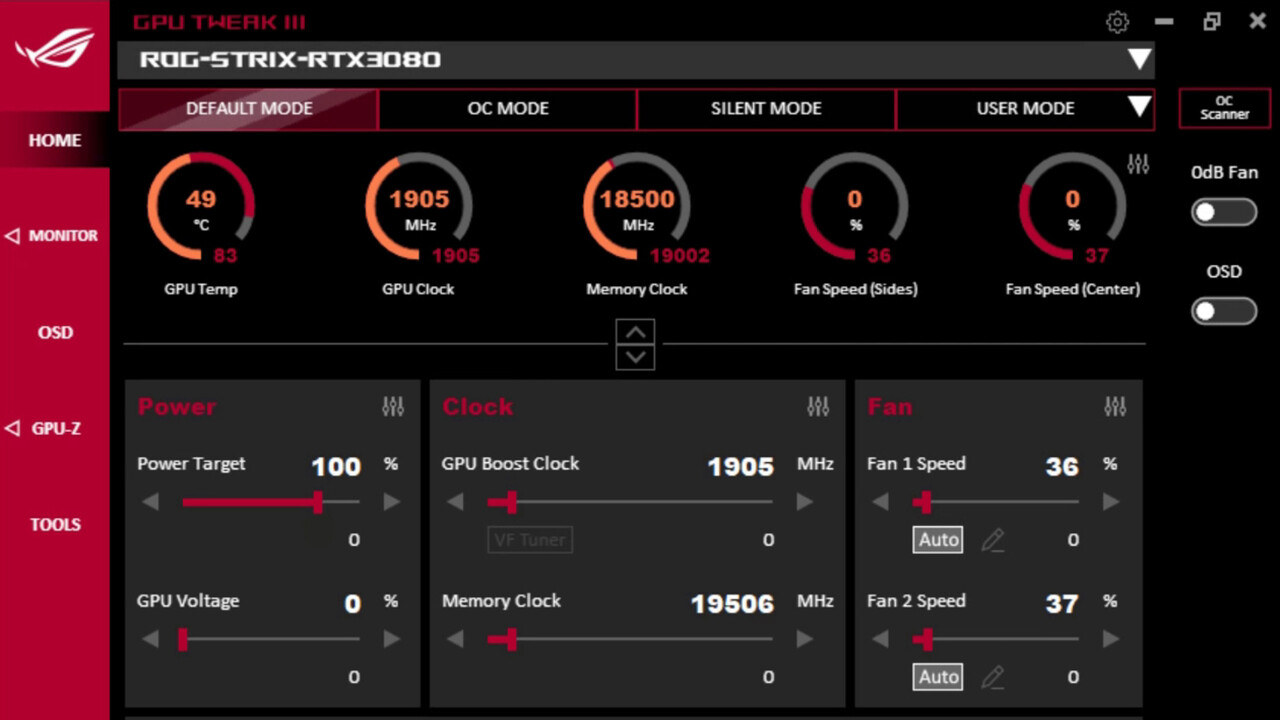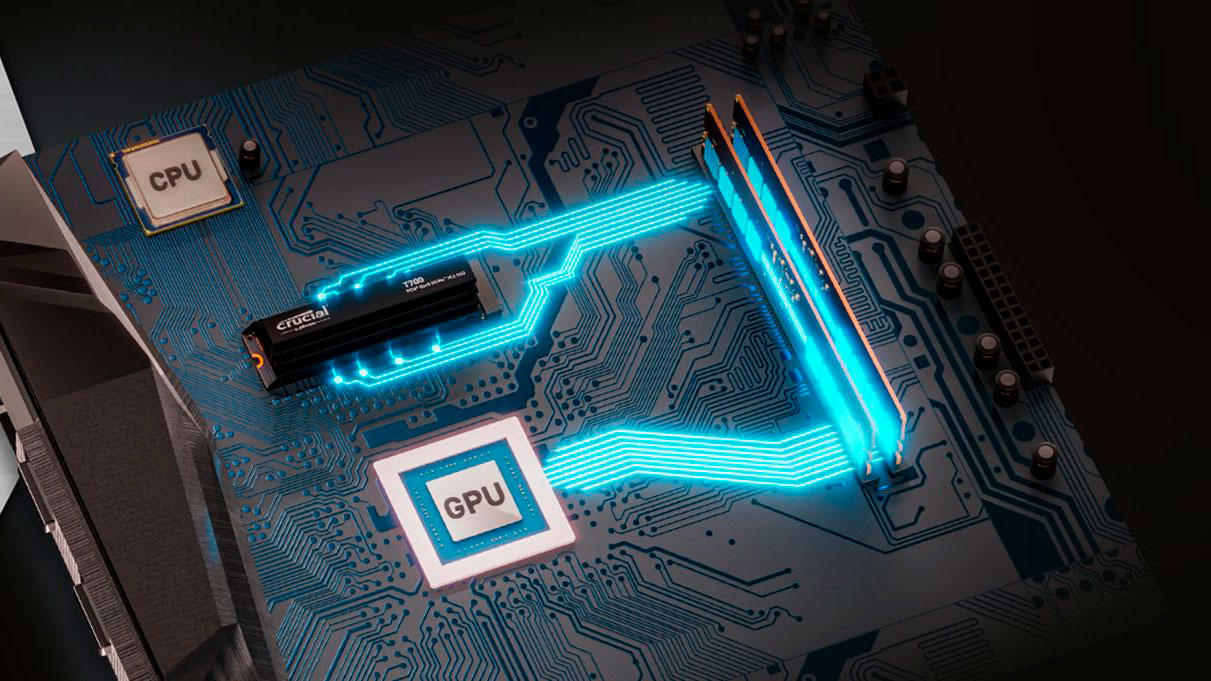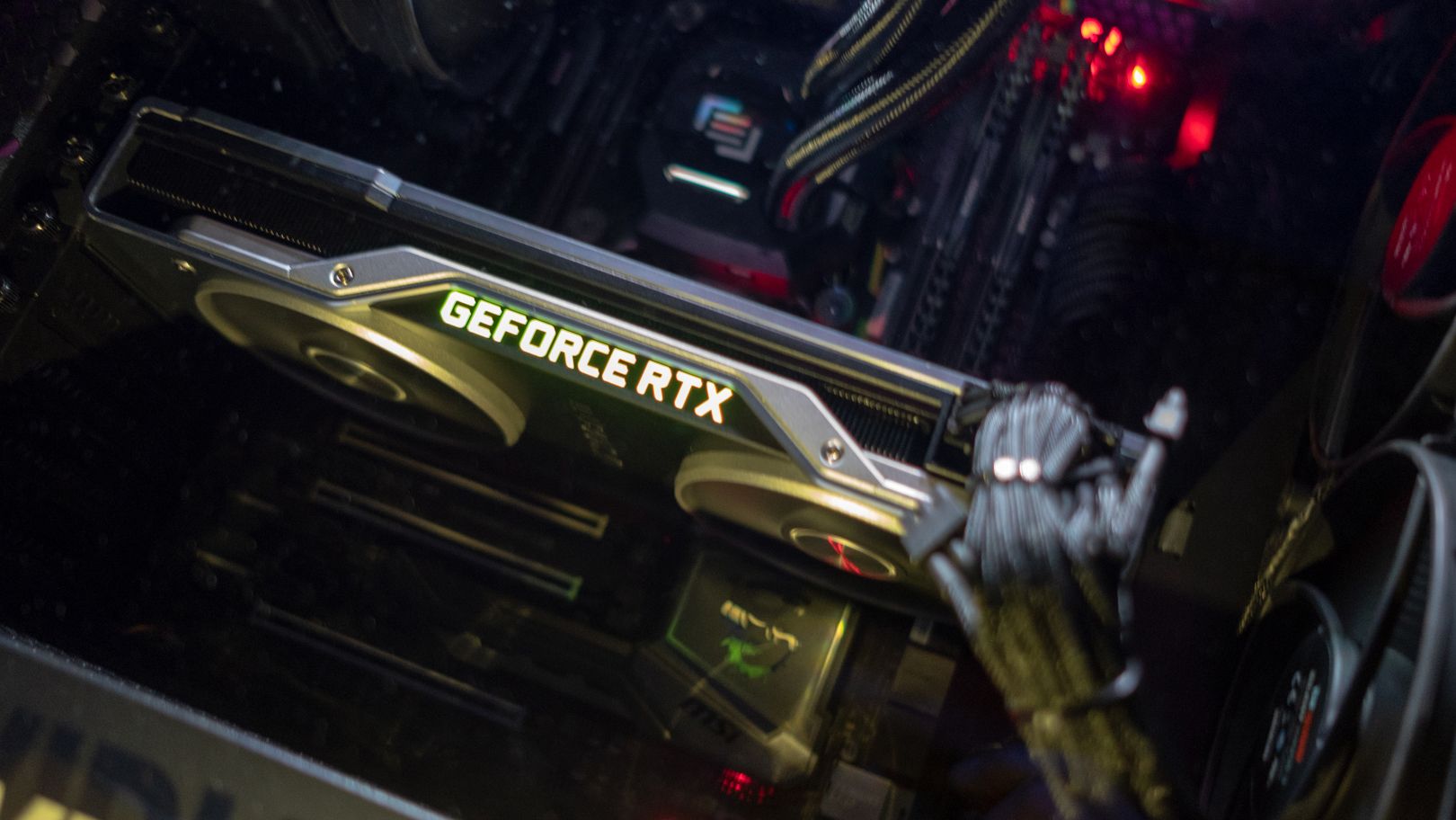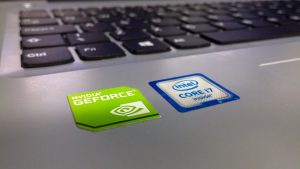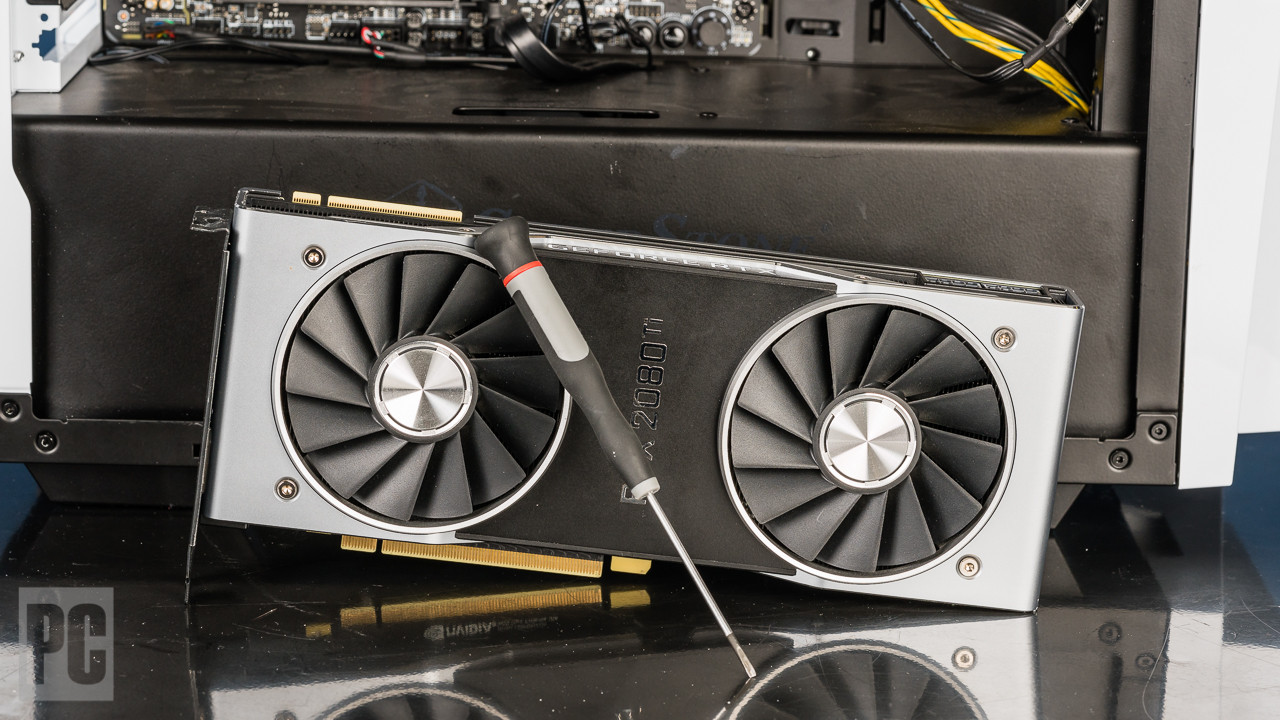Introduction
Welcome to the world of technology, where components and devices work together to bring us a seamless computing experience. One essential component that plays a crucial role in graphics-intensive tasks is the GPU, or Graphics Processing Unit. The GPU is responsible for rendering images, videos, and animations, making it a vital part of any computer system.
When it comes to monitoring system performance, the Task Manager is a powerful tool that provides real-time information about various components, including the CPU, RAM, and disk usage. However, what happens when your GPU doesn’t show up in the Task Manager? This can be a frustrating experience, especially if you rely on your GPU for gaming or other graphic-intensive tasks.
In this article, we will explore the common reasons why your GPU may not be visible in the Task Manager. We will also discuss the steps you can take to troubleshoot and resolve the issue. Before we dive into the troubleshooting process, let’s first understand why the GPU is important in the Task Manager.
The GPU’s visibility in the Task Manager allows you to monitor its usage, temperature, and performance in real-time. It provides valuable insights into how well your graphics card is handling the tasks assigned to it. Whether you’re gaming, editing videos, or working with complex visualizations, the GPU’s performance can significantly impact the overall smoothness and responsiveness of your system.
By having the GPU information easily accessible in the Task Manager, you can quickly identify any performance issues or bottlenecks. You can also monitor the GPU’s temperature to ensure it is within safe operating limits. Overall, the visibility of the GPU in the Task Manager is a crucial feature that helps you optimize your system’s graphics performance.
Now that we understand the importance of the GPU in the Task Manager, let’s explore the potential reasons why your GPU may not be showing up and how to troubleshoot and fix the issue.
Why is the GPU important in Task Manager?
The Graphics Processing Unit (GPU) plays a vital role in the performance and visual experience of your computer. When it comes to tasks such as gaming, video editing, 3D modeling, or running graphic-intensive applications, the GPU takes center stage. In the Task Manager, the GPU’s presence and information provide valuable insights into its performance and utilization. Understanding why the GPU is important in the Task Manager can help you optimize your system and troubleshoot potential issues.
One of the primary reasons the GPU is important in the Task Manager is because it allows you to monitor its utilization. The Task Manager provides real-time information on the GPU’s usage percentage, allowing you to determine how much of its processing power is being utilized. This information is especially useful in tasks where graphics rendering is critical, as it helps you ensure that the GPU is adequately handling the workload.
In addition to utilization, the Task Manager also displays the GPU’s memory usage. This metric gives you insights into the amount of VRAM (Video Random Access Memory) that your GPU is using. When running graphic-intensive applications or games, having sufficient memory is crucial for smooth performance. By monitoring the GPU’s memory usage in the Task Manager, you can identify potential bottlenecks that might be impacting system performance.
The GPU’s temperature is another important aspect that is visible in the Task Manager. Particularly during demanding tasks, the GPU can reach high temperatures, leading to performance degradation or even system instability. By keeping an eye on the GPU’s temperature through the Task Manager, you can ensure that it remains within safe operating limits and take necessary steps to prevent overheating.
Furthermore, the GPU’s performance information displayed in the Task Manager can help you identify any anomalies or performance issues. If you notice sudden drops in GPU usage or significant changes in performance, it could indicate potential software conflicts, driver issues, or even hardware problems. Having this real-time performance data allows you to address these issues promptly and prevent further complications.
Overall, the GPU’s presence and information in the Task Manager are crucial for optimizing your system’s graphics performance. It enables you to monitor utilization, memory usage, temperature, and overall performance, giving you insights into how well the GPU is handling the tasks assigned to it. With this knowledge, you can make informed decisions to optimize your computer’s visual experience and troubleshoot any potential issues that may arise.
Common reasons why the GPU may not show up in Task Manager
When you open the Task Manager and find that your GPU is missing from the list of monitored components, it can be a perplexing situation. However, there are several common reasons why your GPU may not show up in the Task Manager. Understanding these reasons can help you identify and resolve the issue. Let’s explore some of the most frequent causes:
- Outdated graphics drivers: One of the primary reasons why your GPU may not appear in the Task Manager is outdated graphics drivers. Graphics drivers act as a bridge between the operating system and the GPU, enabling communication and functionality. If your graphics drivers are outdated or incompatible, the Task Manager may fail to detect your GPU properly. Updating your graphics drivers to the latest version can often fix this issue.
- Incompatible GPU model or configuration: Sometimes, the GPU may not show up in the Task Manager due to an incompatible GPU model or configuration. This can occur if you have recently upgraded or changed your graphics card, and the system fails to recognize the new hardware. Checking compatibility and ensuring that your GPU is properly installed and connected can help resolve this issue.
- Disabled GPU in the system BIOS: Another common reason for the GPU’s absence in the Task Manager is if it has been disabled in the system BIOS settings. The system BIOS controls the basic functions of your computer’s hardware, including the GPU. It is possible that the GPU has been disabled in the BIOS, preventing it from being recognized by the Task Manager. Enabling the GPU in the BIOS settings can fix this problem.
- Insufficient power supply: GPUs require a sufficient and stable power supply to function correctly. If your power supply is inadequate or experiencing issues, the GPU may not be detected by the Task Manager. Checking the power connections, ensuring proper power delivery, and considering a higher quality power supply can resolve this issue.
- Issues with Windows or Task Manager: Lastly, there can be software-related issues with Windows or the Task Manager itself that cause the GPU to be invisible. This can occur due to system updates, incompatible software, or configuration conflicts. Performing a system update, reinstalling the Task Manager, or checking for conflicting software can help resolve this issue.
These are some of the common reasons why your GPU may not show up in the Task Manager. Understanding these causes can guide you in troubleshooting and fixing the issue. In the next sections, we will explore the steps you can take to address each of these potential problems and restore the visibility of your GPU in the Task Manager.
Outdated graphics drivers
One of the most common reasons why your GPU may not be visible in the Task Manager is outdated graphics drivers. Graphics drivers act as a bridge between your operating system and the GPU, allowing them to communicate and function together. If your graphics drivers are outdated, the Task Manager may fail to detect your GPU or display incorrect information.
Outdated graphics drivers can occur due to several reasons. Perhaps you have not updated your drivers for a long time, or a recent Windows update has caused compatibility issues with your current driver version. Regardless of the cause, updating your graphics drivers is often the simplest and most effective solution.
To update your graphics drivers, you have a few options. The first option is to visit the website of your GPU manufacturer (such as NVIDIA, AMD, or Intel) and search for the latest driver for your specific GPU model. Once you have found the correct driver, download and install it following the manufacturer’s instructions.
Alternatively, you can use driver update software, such as Driver Booster or Driver Easy, which can automatically detect and install the latest drivers for your system. These programs scan your computer for outdated drivers and provide you with a list of available updates. With just a few clicks, you can update your graphics drivers without manually searching for the correct version.
Updating your graphics drivers not only ensures compatibility with the Task Manager but also improves overall system performance and stability. New driver versions often come with bug fixes, performance optimizations, and support for new features and technologies. By keeping your drivers up to date, you can enjoy a smoother and more reliable computing experience.
After updating your graphics drivers, restart your computer and open the Task Manager to check if your GPU is now visible. If it still does not appear, you may need to move on to the next troubleshooting step to resolve the issue.
Note that in some cases, rolling back to a previous version of the graphics driver may solve the problem if the latest update introduced compatibility issues. This can be done through the Device Manager or the driver update software mentioned earlier. However, it is recommended to try updating to the latest driver version first before considering a rollback.
Incompatible GPU model or configuration
If your GPU is not showing up in the Task Manager, one possible reason could be an incompatible GPU model or configuration. This issue often occurs when you have recently upgraded or changed your graphics card.
When installing a new GPU, it’s important to ensure that it is compatible with your system’s hardware and software. Different GPU models have specific requirements in terms of power consumption, slot compatibility, and driver support. If your GPU is not recognized in the Task Manager, it may indicate an incompatibility issue.
The first step in troubleshooting an incompatible GPU model or configuration is to verify that the GPU is properly installed. Check that the GPU is securely seated in its slot on the motherboard and that any power connectors are firmly connected. If the GPU is not seated correctly, the system may fail to detect it.
Additionally, consult the documentation or support resources provided by the GPU manufacturer to ensure compatibility with your system. Verify that your motherboard supports the GPU’s slot type (e.g., PCI Express x16) and that your power supply can deliver sufficient power to the GPU.
If you have recently upgraded your GPU and are experiencing compatibility issues, it may be necessary to uninstall the previous GPU’s drivers before installing the new ones. This can help resolve conflicts and ensure a clean installation of the correct drivers for your new GPU. You can uninstall the previous drivers through the Device Manager or by using dedicated driver uninstallation software.
If you have confirmed that your GPU model is compatible and properly installed, but it still does not appear in the Task Manager, consider updating the BIOS firmware of your motherboard. BIOS updates can sometimes include improved compatibility and support for newer GPU models. Refer to your motherboard manufacturer’s website for instructions on updating the BIOS.
In some cases, it may be necessary to consult with technical support or forums dedicated to your specific GPU model or motherboard to troubleshoot compatibility issues. The community and experts in these forums can provide guidance and assistance in resolving any unique compatibility challenges you may be facing.
By taking these steps to ensure compatibility between your GPU model and system configuration, you can increase the chances of your GPU appearing in the Task Manager and functioning properly.
Disabled GPU in the system BIOS
If your GPU is not showing up in the Task Manager, one possible reason could be that it is disabled in the system BIOS. The system BIOS (Basic Input/Output System) is responsible for controlling the basic functions of your computer’s hardware, including the GPU.
When a GPU is disabled in the system BIOS, it will not be recognized by the operating system and, consequently, will not appear in the Task Manager. This can happen due to various reasons, such as a misconfiguration, accidental change of settings, or even a BIOS update that disabled the GPU by default.
To resolve this issue, you will need to access your system’s BIOS settings and enable the GPU. The steps for accessing the BIOS may vary depending on your computer’s manufacturer, but generally, you can access it by pressing a specific key (such as F2, Del, or Esc) during the boot-up process.
Once you enter the BIOS setup utility, navigate to the section that pertains to hardware or graphics settings. The exact location and wording of these settings may differ depending on your motherboard manufacturer. Look for an option related to the GPU or display settings.
Within the GPU or display settings, check if the GPU is set to “Enabled” or a similar option. If it is currently disabled, change the setting to “Enabled” and save the changes. Restart your computer and check if the GPU is now visible in the Task Manager.
In some cases, the BIOS may have additional settings related to the GPU, such as “Initiate Graphic Adapter” or “Primary Display.” Ensure that these settings are correctly configured to prioritize the dedicated GPU over integrated graphics, if applicable.
It is also worth noting that some systems may have a BIOS option to enable or disable integrated graphics. If you are using a system with both integrated and dedicated graphics, make sure that the integrated graphics are disabled in the BIOS to avoid any conflicts.
If you are unsure about making changes to the BIOS settings, it is recommended to consult the documentation provided by your motherboard manufacturer or seek assistance from a knowledgeable individual. Making incorrect changes in the BIOS can potentially cause other issues or prevent your system from booting correctly.
By enabling the GPU in the system BIOS, you should be able to resolve the issue of it not showing up in the Task Manager. However, if the problem persists, there may be other factors at play that require further investigation and troubleshooting.
Insufficient power supply
An inadequate power supply can be a common reason why your GPU is not showing up in the Task Manager. GPUs require a stable and sufficient power supply to function properly. If your power supply is insufficient or experiencing issues, it can prevent the GPU from being detected by the system.
When a GPU doesn’t receive enough power, it may not initialize or operate correctly, leading to it not being recognized by the Task Manager. This can happen when the power supply unit (PSU) does not provide enough wattage to support the GPU’s power requirements.
To determine if an inadequate power supply is causing the issue, first, check the power cables and connections to ensure they are secure and properly connected to both the PSU and the GPU. Sometimes, loose connections can result in power delivery problems.
If the connections are secure and the issue persists, consider the wattage rating of your power supply. GPUs typically have specific power requirements listed by the manufacturer, which include minimum wattage recommendations. Make sure your power supply meets or exceeds the minimum requirements of your GPU.
If your power supply is underpowered for your GPU, you may need to upgrade to a higher wattage PSU. Keep in mind that other components in your system, such as the CPU and additional peripherals, also require power, so it’s essential to consider the overall power needs of your system.
In addition to wattage, the quality of the power supply is important. Low-quality or faulty power supplies can impact power stability, resulting in inconsistent voltage levels that can affect the GPU’s performance and recognition. Consider investing in a reliable and reputable power supply to ensure stable and adequate power delivery.
If you are unsure about the power supply requirements or which one to choose, consult the manufacturer’s specifications and documentation for both your GPU and motherboard. Additionally, there are online PSU calculators available that can help determine the appropriate wattage for your specific system configuration.
Upgrading your power supply to provide sufficient and stable power to your GPU can often resolve the issue of it not showing up in the Task Manager. However, if the problem persists after ensuring an adequate power supply, there may be other factors contributing to the issue that require further investigation.
Issues with Windows or Task Manager
It is possible that the absence of your GPU in the Task Manager is due to issues with the Windows operating system or the Task Manager itself. Software conflicts, outdated versions, or configuration errors can all contribute to the GPU not being detected. Here are some steps you can take to troubleshoot and resolve these Windows or Task Manager-related issues:
Perform a system update: Ensure that your Windows operating system is up-to-date with the latest patches and updates. Windows updates often include bug fixes, security enhancements, and compatibility improvements that can help resolve issues with hardware detection.
Reinstall the Task Manager: If you suspect that the Task Manager is not functioning correctly, you can try reinstalling it to resolve any potential software-related issues. To do this, open the Task Manager, click on “Options” in the top menu, and then select “Reinstall” or “Restore Task Manager” if available.
Check for conflicting software: Certain software programs or utilities, such as third-party monitoring tools or antivirus software, can interfere with the task manager’s ability to detect the GPU. Temporarily disable or uninstall any such programs and check if the GPU appears in the Task Manager after doing so.
Clear the task manager processes: Sometimes, the Task Manager may not display the GPU if it has encountered a temporary glitch or error. Clearing the Task Manager’s processes can help resolve this issue. To do this, close the Task Manager, press “Ctrl + Shift + Esc” to reopen it, and then click on “File” in the top menu and select “Restart” or “Relaunch”.
Restart the Windows Explorer: Restarting the Windows Explorer process can also refresh the Task Manager’s functionality. Open the Task Manager, find the “Windows Explorer” process in the “Processes” tab, right-click on it, and select “Restart”. This will restart the Windows Explorer and may help resolve any issues with the Task Manager.
Run system diagnostics: Windows provides built-in system diagnostic tools that can help identify and fix software-related issues. Use tools like the Windows System File Checker (SFC) or the Deployment Image Servicing and Management (DISM) tool to scan and repair any corrupted system files that may be affecting the Task Manager and GPU detection.
If these steps do not resolve the issue, it may be necessary to seek further assistance, such as contacting Microsoft support or seeking help from technical forums dedicated to Windows or Task Manager troubleshooting. They can provide specific guidance based on your system configuration and any error messages you may encounter.
By addressing potential issues with Windows or the Task Manager, you can increase the chances of your GPU being detected and appearing in the Task Manager as expected.
How to troubleshoot and fix the issue
If your GPU is not showing up in the Task Manager, there are several troubleshooting steps you can follow to identify and resolve the issue. By systematically troubleshooting the problem, you can increase the chances of getting your GPU recognized and visible in the Task Manager. Here’s a step-by-step guide:
- Check physical connections: Ensure that your GPU is properly installed and securely connected to the motherboard. Verify that the power connectors are firmly attached as well.
- Update graphics drivers: Outdated or incompatible graphics drivers can prevent the GPU from being detected. Update your graphics drivers to the latest version available from the manufacturer’s website.
- Verify GPU compatibility: Make sure that your GPU model is compatible with your motherboard and system configuration. Check the manufacturer’s documentation or website for compatibility information.
- Enable GPU in the system BIOS: Enter the system BIOS settings and ensure that the GPU is enabled. Look for any options related to graphics or display settings.
- Check power supply: Insufficient power supply can cause issues with GPU detection. Verify that your power supply meets the recommended wattage for your GPU and that all power connections are secure.
- Resolve Windows or Task Manager issues: Perform a system update to ensure that your Windows operating system is up-to-date. Consider reinstalling the Task Manager or checking for conflicting software that may be preventing the GPU from being detected.
By going through these troubleshooting steps, you can identify and address the potential causes of the issue. It’s important to test the Task Manager after each step to determine if the GPU is now visible. If the problem remains unresolved, you may need to seek further assistance, such as consulting technical forums, contacting the GPU manufacturer’s support, or reaching out to a professional technician.
Remember that patience and thoroughness are key when troubleshooting technical issues. By following these steps and ruling out potential causes one by one, you can increase the chances of resolving the issue and getting your GPU recognized in the Task Manager.
Updating graphics drivers
One of the crucial steps in troubleshooting the issue of a GPU not appearing in the Task Manager is updating the graphics drivers. Outdated or incompatible drivers can prevent the GPU from being recognized by the system. By updating the graphics drivers, you can ensure that the GPU is properly detected and visible in the Task Manager.
To update your graphics drivers, you have a few options. The first option is to visit the website of your GPU manufacturer, such as NVIDIA, AMD, or Intel. Locate the support or drivers section and search for the latest driver for your specific GPU model and operating system. Download the driver and follow the installation instructions provided by the manufacturer.
If you are unsure about the exact GPU model or finding the right driver, you can utilize driver update software such as Driver Booster, Driver Easy, or the built-in Windows Device Manager. These programs scan your system for outdated drivers and automatically download and install the latest versions for your GPU.
When updating the drivers, it is recommended to perform a clean installation. This involves uninstalling the existing drivers before installing the new ones. You can use the driver update software or the Device Manager to uninstall the drivers. After uninstalling, restart your computer and proceed with installing the new drivers.
Updating the graphics drivers not only resolves compatibility issues but also provides performance optimizations and bug fixes. New driver versions often introduce enhancements in GPU performance, stability, and compatibility with the operating system and software applications.
After installing the updated drivers, restart your computer and open the Task Manager to check if the GPU is now visible. If the GPU is still not appearing, proceed to the next troubleshooting step. However, if the GPU is now detected, ensure that the Task Manager is displaying the correct information by monitoring the GPU’s usage, memory usage, and temperature.
Regularly updating your graphics drivers is essential to ensure optimal performance and compatibility with your GPU. It’s recommended to periodically check for new driver releases from the manufacturer and update them as needed. This can help resolve issues related to GPU detection and improve overall system performance.
Checking GPU compatibility and configuration
When troubleshooting the issue of a GPU not showing up in the Task Manager, it is crucial to assess GPU compatibility and configuration. Incompatibility between the GPU and the system’s hardware or configuration can prevent the GPU from being detected. By ensuring compatibility and verifying the GPU’s configuration, you can identify and resolve any potential issues.
The first step is to check the compatibility of your GPU with your system’s hardware and operating system. Consult the documentation or the manufacturer’s website for your GPU to find information on supported hardware requirements. Verify that your motherboard has the appropriate slot (e.g., PCI Express x16) to accommodate the GPU.
Additionally, consider the power requirements of the GPU. Many high-performance GPUs require additional power connectors from the power supply unit (PSU) to operate correctly. Ensure that your PSU has the necessary connectors and sufficient power output to support the GPU. Insufficient power can prevent the GPU from being recognized.
If you have recently installed a new GPU, double-check the physical installation. Ensure that the GPU is correctly seated in the motherboard’s slot and that all power connectors are firmly connected. Loose connections can prevent the GPU from being detected by the system.
Next, review the BIOS settings to confirm that the GPU is enabled. Access the system BIOS by restarting your computer and pressing a specific key (such as F2, Del, or Esc) during the boot-up process. Navigate to the settings related to graphics or display and ensure that the GPU is set to “Enabled.”
Confirm that the GPU is selected as the primary display adapter if your system has multiple display options, such as integrated graphics. This setting can usually be found in the BIOS under the “Primary Display” or a similar option. Prioritizing the GPU as the primary display adapter helps ensure its recognition by the operating system.
Additionally, ensure that you have the latest BIOS firmware installed for your motherboard. BIOS updates can provide improved compatibility and support for newer GPU models. Check the manufacturer’s website for your motherboard and follow the provided instructions to update the BIOS if necessary.
If you have made any recent changes to your system’s hardware or configuration, such as adding memory or upgrading the CPU, consider reverting those changes to the previous working state. Incompatible hardware changes can cause conflicts that prevent the GPU from being detected.
By checking GPU compatibility with the system’s hardware, verifying its configuration settings in the BIOS, and ensuring that the latest firmware updates are installed, you can address any compatibility issues that may be hindering the GPU’s visibility in the Task Manager.
Enabling the GPU in the system BIOS
If your GPU is not showing up in the Task Manager, one possible reason could be that it is disabled in the system BIOS. The system BIOS (Basic Input/Output System) controls the basic functions of your computer’s hardware, including the GPU. If the GPU is disabled in the BIOS settings, it will not be recognized by the operating system, and thus, will not appear in the Task Manager.
To resolve this issue, you need to enter the system BIOS and enable the GPU. The steps to access the BIOS may vary depending on your computer’s manufacturer, but generally, you can do so by restarting your computer and pressing a specific key (such as F2, Del, or Esc) during the boot-up process.
Once you are in the BIOS setup utility, navigate to the section that pertains to hardware or graphics settings. The exact location and terminology may differ based on your motherboard manufacturer. Look for an option related to the GPU or display settings.
Within the GPU or display settings, verify that the GPU is set to “Enabled” or a similar option. If it is currently disabled, change the setting to “Enabled” and save the changes. The specific steps for saving changes may vary, but typically you can do so by pressing F10 or choosing the appropriate option provided by the BIOS.
After enabling the GPU in the BIOS settings, restart your computer and check if the GPU is now visible in the Task Manager. Opening the Task Manager and navigating to the “Performance” or “GPU” tab should show the GPU and its related statistics, such as usage, memory, and temperature.
If the GPU is still not appearing in the Task Manager, double-check that you correctly enabled it in the BIOS settings. It is possible that the GPU may require additional configurations or settings to work properly. Consult the documentation provided by your motherboard manufacturer or seek assistance from technical forums dedicated to your specific hardware configuration.
Enabling the GPU in the system BIOS is essential to ensure that the operating system can detect and utilize its capabilities. By following the steps outlined above, you can increase the chances of your GPU being recognized and appearing in the Task Manager, allowing you to monitor its performance and utilization accurately.
Ensuring adequate power supply
An insufficient power supply can often be a culprit when your GPU is not showing up in the Task Manager. GPUs require a stable and adequate power supply to function properly. If the power supply is inadequate or experiencing issues, it can prevent the GPU from being detected by the system.
To ensure that your power supply is providing sufficient power to the GPU, there are several steps you can take:
- Check power connections: Verify that all power connections from the power supply to the GPU are securely and correctly connected. Loose or improperly connected power cables can cause power delivery issues and prevent the GPU from being detected.
- Assess the power supply wattage: GPUs have specific power requirements listed by the manufacturer. Check the recommended minimum wattage for your specific GPU model. If your power supply has a lower wattage than the GPU requires, it may not be providing enough power for the GPU to function correctly.
- Consider the power supply quality: The quality of the power supply is also important. A low-quality or faulty power supply can result in unstable power delivery, which can affect the GPU’s performance and recognition. Investing in a reliable and high-quality power supply can help ensure stable power delivery to the GPU.
- Calculate power consumption: Use online PSU calculators or software tools provided by the GPU manufacturer to estimate your system’s total power consumption. These calculators take into account not only the GPU but also other components such as the CPU, memory, and peripherals. Ensure that your power supply’s wattage is higher than the estimated power consumption.
- Consider upgrading the power supply: If you determined that your power supply does not meet the power requirements of your GPU or if you suspect it is becoming faulty, upgrading to a higher wattage power supply is recommended. Make sure to choose a power supply from a reputable brand that meets the power demands of your system.
By double-checking power connections, assessing the power supply wattage and quality, calculating power consumption, and considering an upgrade if necessary, you can ensure that your GPU is receiving an adequate and stable power supply. This increases the chances of your GPU being detected by the system and appearing in the Task Manager.
Keep in mind that issues with power supply can cause instability and lead to other problems as well, so ensuring a proper and reliable power supply is essential for the overall performance and longevity of your system.
Resolving Windows or Task Manager issues
If your GPU is not showing up in the Task Manager, the issue may lie within the Windows operating system or the Task Manager itself. Various factors such as software conflicts, outdated versions, or configuration errors can contribute to the GPU not being detected. Here are some steps you can take to troubleshoot and resolve Windows or Task Manager-related issues:
- Perform system updates: Ensure that your Windows operating system is up to date with the latest patches and updates. Windows updates often include bug fixes, security enhancements, and compatibility improvements that can help resolve issues with hardware detection.
- Reinstall the Task Manager: If you suspect that the Task Manager is not functioning correctly, you can try reinstalling it to resolve any potential software-related issues. To do this, open the Task Manager, click on “Options” in the top menu, and then select “Reinstall” or “Restore Task Manager” if available.
- Check for conflicting software: Certain software programs or utilities, such as third-party monitoring tools or antivirus software, can interfere with the Task Manager’s ability to detect the GPU. Temporarily disable or uninstall any such programs and check if the GPU appears in the Task Manager after doing so.
- Clear the Task Manager processes: Sometimes, the Task Manager may encounter temporary glitches or errors that prevent the GPU from appearing. Clearing the Task Manager’s processes can help resolve this issue. To do this, close the Task Manager, press “Ctrl + Shift + Esc” to reopen it, and then click on “File” in the top menu and select “Restart” or “Relaunch”.
- Restart the Windows Explorer: Restarting the Windows Explorer process can also refresh the Task Manager’s functionality. Open the Task Manager, find the “Windows Explorer” process in the “Processes” tab, right-click on it, and select “Restart”. This will restart the Windows Explorer and may help resolve any issues with the Task Manager.
- Run system diagnostics: Windows provides built-in system diagnostic tools that can help identify and fix software-related issues. Use tools like the Windows System File Checker (SFC) or the Deployment Image Servicing and Management (DISM) tool to scan and repair any corrupted system files that may be affecting the Task Manager and GPU detection.
Applying these troubleshooting steps can help address any Windows or Task Manager issues that may be causing the GPU to not appear in the Task Manager. It is recommended to test the Task Manager after each step to determine if the GPU is now visible. If the problem persists, seeking further assistance, such as contacting Microsoft support or consulting technical forums, may be necessary.
By addressing potential Windows or Task Manager-related issues, you can increase the chances of your GPU being detected and appearing as expected in the Task Manager, allowing you to monitor its performance and utilization accurately.
Conclusion
The visibility of the GPU in the Task Manager is essential for monitoring its performance, utilization, and temperature. If your GPU is not showing up in the Task Manager, it can be frustrating, but there are several common reasons and troubleshooting steps you can follow to resolve the issue.
Common causes for the GPU not appearing in the Task Manager include outdated graphics drivers, incompatible GPU models or configurations, disabled GPU in the system BIOS, insufficient power supply, and issues with Windows or the Task Manager itself. By addressing these potential issues one by one, you can increase the chances of your GPU being recognized and visible in the Task Manager.
Updating graphics drivers, checking GPU compatibility and configuration, enabling the GPU in the system BIOS, ensuring an adequate power supply, and resolving Windows or Task Manager issues are the key steps in troubleshooting and addressing the issue.
Remember, patience and thoroughness are key when troubleshooting technical issues. If one solution doesn’t work, try the next until the issue is resolved. It may also be helpful to consult manufacturer documentation, support forums, or seek professional assistance if needed.
Ensuring that your GPU is recognized and visible in the Task Manager allows you to monitor its performance, utilization, and temperature accurately. By maintaining an optimized and properly functioning GPU, you can get the best out of your system and enjoy smooth, graphics-intensive tasks such as gaming, video editing, and more.
Regularly updating drivers, staying informed about compatibility, and performing routine system maintenance can help prevent such issues from occurring in the future. By following these best practices, you can ensure that your GPU continues to be recognized and perform optimally in the Task Manager and beyond.









